Polyamorous: What It Means And Why It's Not All About Sex
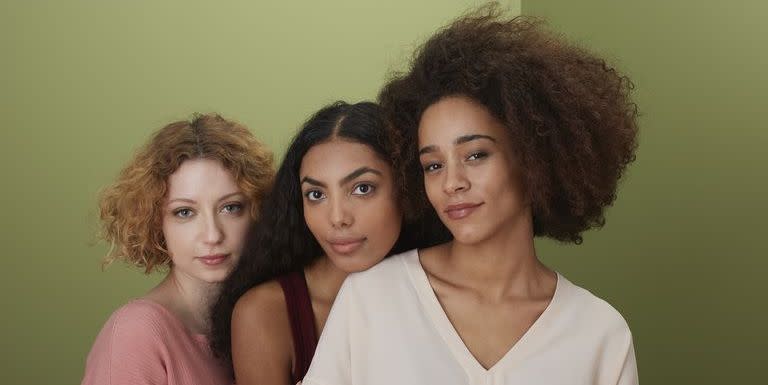
Storybooks, fairytales and the media have hardwired many of us into believing we will eventually meet ‘The One’ – the person we’re supposed to spend the rest of our lives with.
You may think that the idea of a soulmate is unrealistic, believe that you will encounter several Ones in your life or find the idea of needing a signifiant other at all rather insulting ('So what, we’re incomplete if we choose to be on our own?').
Polyamorous relationships are a further rejection of the monogamous relationship convention. Polyamory allows for you to be in consenting relationships with more than one person, concurrently.
Sounds complicated? Perfect? Confusing? A recipe for disaster? How a polyamorous relationship works might sound complex at first, but it's often misunderstood.
Though the concept has been around for centuries, polyamory has come further into the forefront of people's consciousness in recent years. From TV shows like House of Cards to celebrities admitting that they’re in open relationships, polyamory – otherwise known as 'consensual non-monogamy' (CNM) – is very much in the cultural ether.
But how common is polyamory?
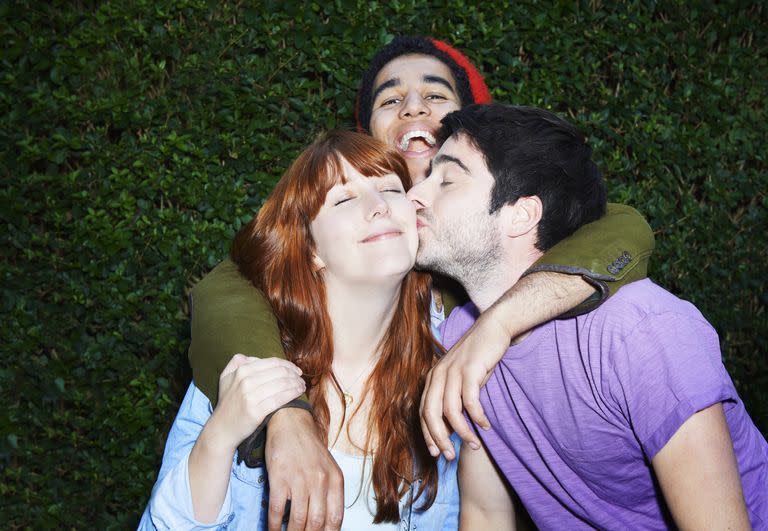
A January 2020 YouGov poll found that approximately one-third of US adults (based on a group of 1,300 people) say that their ideal relationship is non-monogamous to some degree. However, only about five per cent of Americans currently live a non-monogamous lifestyle.
Many of us might like the sound of a polyamorous relationship in theory, but how does it work in practise?
Here's everything you need to know about polyamory and what it means to be in a polyamorous relationship:
What is polyamory?
The Merriam Webster dictionary defines the term as: 'The state or practice of having more than one open romantic relationship at a time.'
While technically correct, sex and polyamory educators argue that this definition ignores a vital component: consent.
'Polyamory is an ethically, honestly, and consensually driven relationship structure that allows us to engage in many loving relationships,' sex-positivity educator, Lateef Taylor, told Shape in 2019. 'The consent component here is vital.'
This means that people in a polyamorous relationship should be aware of and agree to the relationship's dynamics, emotions and needs, from the outset and again every time the dynamic changes. Essentially, there shouldn't be any 'I'm just nipping out for a few hours' secrets among those involved.
The Macmillan dictionary describes the term 'polyamory' more accurately, noting: 'Having more than one serious, sexual-emotional relationship at the same time.'
Polyamory is also known as 'consensual non-monogamy', as explained by Dr Elisabeth Sheff, author of The Polyamorists Next Door, to Psychology Today in 2018.
'Polyamory is a form of consensual non-monogamy (CNM) with emotionally intimate relationships among multiple people that can also be sexual and/or romantic partners,' she stated.
She explains that polyamory encompasses open relationships (where you agree you can have sex with anyone you want, but probably won't report back to your partner about the experience every time), to solo polyamory, where you identify as polyamorous, but are not currently in multiple relationships.
Charyn Pfeuffer, 47, from Seattle and author of 101 Ways to Rock Online Dating: How to find love (or not) in the digital world has dated both monogamously and non-monogamously over the years.
'I’ve found that having the space to explore various relationship models with freedom and openness works best for me,' Pfeuffer tells ELLE UK. 'I’m pansexual and attracted to all sexes and gender identities, so it’s impossible for me to confine love, attraction, and intimacy to a neat and tidy labeled box.'

Kitchen table polyamory (KTP) is a branch of polyamory that Pfeuffer has practised.
KTP is a dynamic in which partners and 'metamours' (a partner's partner) all know each other, and, in theory, would feel comfortable meeting up together. For Pfeuffer, her experience of this type of relationship turned into a MFF (male-female-female) triad, which involved her dating a married couple, individually and together, for a year.
The author explains that given her huge capacity to love and care for others, non-monogamy (specifically polyamory) allows her to tear down the social constructs we’ve been taught, and allows her to love multiple partners with total transparency.
'Polyamory isn’t for everyone; ditto for monogamy,' Pfeuffer continues, noting that there are rarely alternatives considered, nor the idea that one can choose to design their own relationship. 'Like any relationship, it’s a commitment (but with multiple partners) and requires constant work.'
Is polyamory a new concept?
'Free love' or non-monogamy has been practised for millions of years, with anthropologists arguing that polyamory was common among hunter-gather societies.
As psychologist and author Christopher Ryan previously stated: 'These overlapping, intersecting sexual relationships strengthened group cohesion and could offer a measure of security in an uncertain world.'
And as early as the 1800s, several groups in America – such as Mormons – practised a multiple partner relationship style.
As a concept, polyamory is currently in its third wave of obscure popularity, according to Dr Sheff.
'During the first wave, utopians, feminists, and anarchists advocated consensual non-monogamy as a cure for everything from capitalist oppression to men’s tyrannical ownership of women,' she argues.

'The second wave began with the "free love" portion of the sexual revolution of the 1960s and 1970s, flourishing among hippies, swingers, and disco dancers. The third and current wave, largest by far, started with the spread of Internet communication.'
Where does the term 'polyamorous' come from?
The word 'polyamorous' is a blend of 'poly' (from the Greek phrase meaning 'more than one') and 'amor' (the Latin word for 'love'), according to the Macmillan Dictionary.
The term 'polyamory' is believed to have been officially coined and popularised by US poet Morning Glory Zell-Ravenheart in 1990, in an article entitled A Bouquet of Lovers.

In 1999, she was allegedly asked by the editor of the Oxford English Dictionary to provide a definition, reports the Dictionary.
At the time, the wordsmith defined polyamory as: 'The practice, state or ability of having more than one sexual loving relationship at the same time, with the full knowledge and consent of all partners involved.'
Is polyamory just for people who are obsessed with sex?
In much the same way as many other relationships, polyamory encompasses more than just the physical. A healthy relationship - be it monogamous or poly - requires trust, communication, consent and respect.
Pfeuffer has been in two dozen or so non-monogamous and polyamorous relationships and has previously said that while being 'poly' requires openness, 'it’s not a free-for-all f*ckfest'.
'For me, it’s about cultivating meaningful, ongoing relationships with the potential for falling in love,' she told Glamour in 2018.
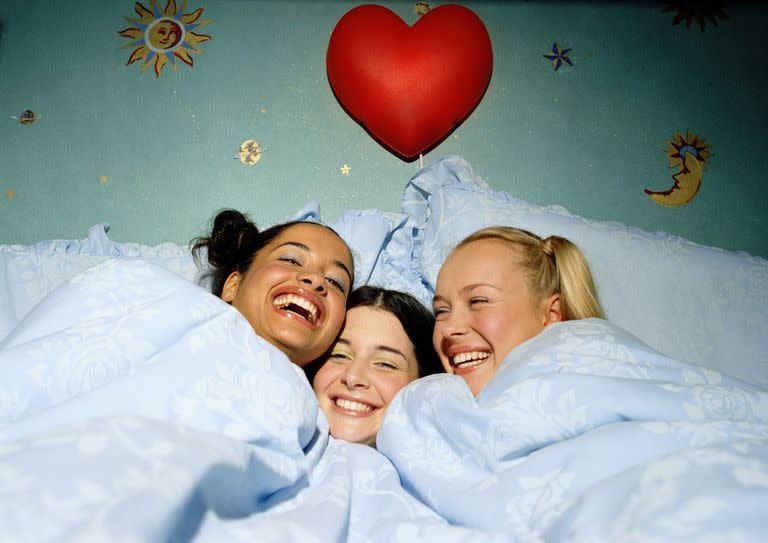
'Polyamory requires a huge amount of emotional vulnerability to figure out who I am and what I want from different relationships,' she explains to us.
'Ditto for communication and Google calendar skills. My relationships ebb and flow, and there’s a safe space to renegotiate relationships agreements to ensure that everyone’s needs are met.'
Pfeuffer states that there no one, universally right way to do polyamory.
Does polyamory require set rules?
The boundaries of all polyamorous relationships can be different, like they are in other types of unions.
Dedeker Winston, co-host of the Multiamory podcast and author of The Smart Girl's Guide to Polyamory, currently has two partners who she's been in relationship with for seven and four years, respectively.
'I haven't had any kind of "rule setting" conversation with either of my partners,' says Winston. 'But we have, over the course of the relationship, figured out mutual best practices that make sense.'
Practices include communicating honestly, being proactive in talking about sexual health and having regular relationship check-ins to make sure everyone is feeling fulfilled.
'I like to turn more towards figuring out my personal boundaries and coming up with best practices with each partner,' Winston, who is also a relationship coach, continues. 'In my work with clients, I see restrictive rules often fail miserably as many people find themselves agreeing to rules that they can't abide by once they are actually exploring multiple relationships.'
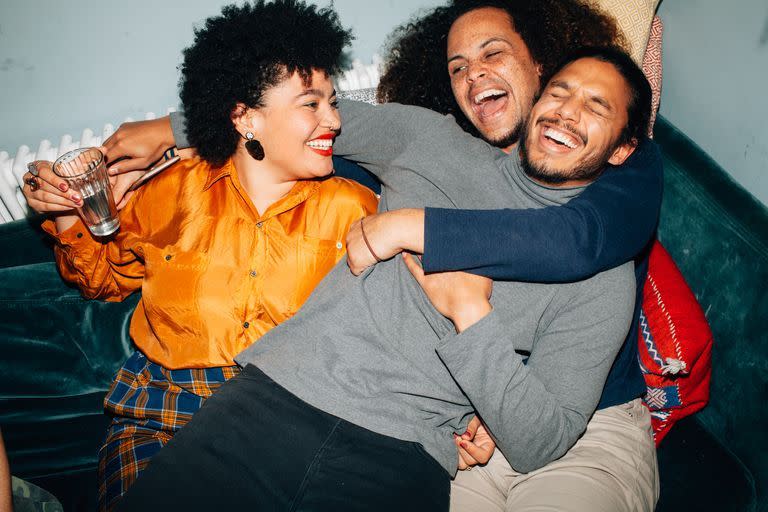
She argues that this often leads to rules-lawyering or finding loopholes, and Winston says that polyamory can be complex depending on the personalities and rules that may be involved. Jealousy still exists, but Winston believes the good outweighs the bad.
'I can say hands down that I've experienced more joy, trust, compassion, growth, and moments of tenderness than I ever did in monogamous relationships in my past,' she notes.
Which celebrities have been in polyamorous relationships?
Actor Bella Thorne, activist Bethany Meyers, her husband actor Nico Tortorella, and writer Jessamyn Stanley have previously identified as polyamorous.
In a saved Instagram Story in 2019, Stanley wrote: 'Polyamory gets confused with wanting to have sex or needing to have sex with a lot of different people, which is really not what it's about.'
Will Smith and Jada Pinkett Smith have previously commented on the openness involved in their relationship, but have not specifically identified as being polyamorous.
In 2013, Jada Pinkett-Smith told HuffPost Live that her husband 'is his own man' and 'can do whatever' he wants.

After receiving backlash for her comments, the actress addressed her thoughts on Facebook that year, writing: 'Do we believe loving someone means owning them? Do we believe that ownership is the reason someone should "behave"?'
'Will and I BOTH can do WHATEVER we want, because we TRUST each other to do so [sic],' Pinkett Smith continued, referring to her relationship as a 'grown' one as opposed to 'open relationship'.
Most recently, Jada Pinkett Smith's daughter Willow Smith opened up about being polyamorous on her show Red Table Talk: 'With polyamory, I feel like the main foundation is the freedom to be able to create a relationship style that works for you and not just stepping into monogamy because that's what everyone around you says is the right thing to do.'
Smith explained she felt the main reason for breakups in monogamous relationships was cheating and shared that she became interested in the idea because she was 'introduced to it through kind of a nonsexual lens'.
'Let's say you haven't always been the kind of person that wanted to have sex all the time, but your partner is. Are you gonna be the person to say, you know, "Just because I don't have these needs, you can't have them either?"' said Smith, adding that in her friend group, where she is the only poly person, she had 'the least sex out of all of [her] friends'.
What TV series and films show polyamorous relationships?
Louis Theroux's Altered States: Love Without Limits might be the most famous exploration of the subject on television to date.
A description of the 2018 BBC Two programme online reads: '[Theroux] discovers that for many, more partners means more love and more happiness.'
Spike Lee's 1986 film She's Gotta Have It and the 2018 BBC drama Wanderlust also reference the relationship type (both available to watch on Netflix).

Pfeuffer notes that shows like You Me Her, Unicornland, the fourth season of House of Cards, and Cartoon Network's series Steven Universe (which broke ground for LGBTQ+ visibility in children's shows) explore what life is like beyond traditional monogamy well.
'There are hundreds of relationship variations within polyamory, yet media narratives tend to drive some recurring stereotypes,' Winston tells ELLE UK.
What are the best dating apps for polyamory?
Dating app Feeld is one of the largest open-minded communities worldwide, with over 700,000 connections made every month. Launched in 2014, it started out as a dating app for couples looking to experiment and explore dating together, becoming known as the 'app for threesomes'.
Later, it was labelled the 'polyamorous dating app', but in 2021 describes itself as 'the go-to place for couples, lovers or curious friends of all genders and sexual identities looking to open up their relationships or simply experiment'. It's popularity is ever growing; the number of messages sent on the platform has grown by 130% since January 2019 and the number of active users on the platform has grown by 160% during the same time frame.
Making it this far as a dating app actively encouraging non-manogomy wasn't without it's challenges. For a long time, investors considered it adult entertainment and it took two years to get the investment it needed. At one point, the money transfer app TransferWise temporarily blocked Feeld’s ability to collect money for paid memberships because Feeld was considered 'adult content'.
Similarly, ethical non-monogamy dating app #open, which launched in 2016, was suspended by Google Play Store for violating the 'Sexual Content and Profanity policy' – despite playing by Google's rules – in March 2o21.
'The simple fact of the matter is this is out of our control & yet another example of how quickly & effortlessly thousands of marginalised individuals can be silenced,' tweeted the Twitter account for #open. 'Facebook, Instagram, & other large tech companies alike, continue to suppress content, ideologies & in turn, communities, through vague ‘guidelines’ that seem to conveniently apply to unconventional brands & thoughts.'
The #open developers appealed the suspension, but told Vice that this lost time is damaging. Before, they said they'd ranked as number one in Google Play for the search 'Polyamorous dating' and 'Polyamorous Dating app'.
Is polyamory only for couples adding a third party?
Dedeker explains that people often make the assumption that polyamory is something that couples do, rather than something that individuals do.
'This means that many people assume that one of my two partners is the "real" partner, and my other partner must just be for fun,' she says.
Recalling her own experience of the misunderstanding of polyamory, she adds: 'Someone even went so far as to ask me, "If one of your partners had to die, which one would you choose?"
'That kind of disgusting questioning is something we would never ask someone of their children, their parents, their siblings, friends, etc. But our monogamy-dominant cultural narratives lead many people to believe that you can only really care about one person romantically.'

Is polyamory the same as an open relationship?
Not necessarily, although both are considered non-monogamous.
According to the Handbook of the Sociology of Sexualities, an open relationship is typically defined as having sexual intercourse with others (other than one's partner/spouse) but that those sexual encounters don't develop into relationships. Meanwhile, polyamory involves having multiple relationships. Love and emotional connections are the driving forces in the latter.
In 2018, Renee Divine, L.M.F.T., a sex and relationships therapist in Minneapolis, clarified the difference to Women's Health, noting: 'An open relationship is one where one or both partners have a desire for sexual relationships outside of each other, and polyamory is about having intimate, loving relationships with multiple people.'
What's the difference between polyamory and polygamy?
Technically, polyamory means multiple loves and polygamy means multiple spouses.
Dr Sheff explaine: 'Polygamy is almost universally heterosexual, and only one person has multiple spouses of a different gender. The most common form of polygamy by far is polygyny, a marriage in which one man marries multiple women.'
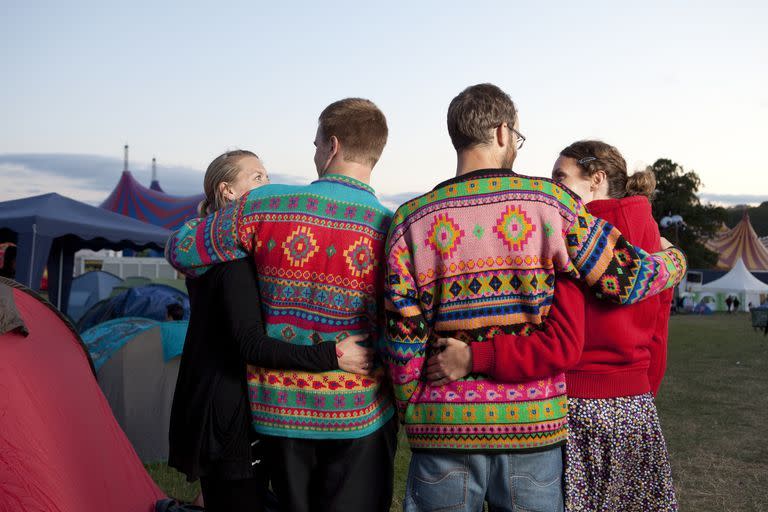
This is most commonly found in the Mormon fundamentalist community.
The Channel 4 2017 documentary Three Wives, One Husband introduces viewers to Enoch Foster of the Rockland Range – a remote community of committed polygamists in Utah. At the time, the show explored how Foster had fathered 16 children with his two wives, who 'took turns' getting pregnant, and how he was beginning to court the family's nanny.
'Polygamy has been around ever since people created marriage,' noted Dr Sheff. 'Notable men like Abraham, Jacob, David, and Solomon from the Torah/Old Testament had multiple wives and did a lot of begetting with them all.'
Do polyamorists have their own pride flag?
Yes. In 2014, the first poly pride flag is believed to have been created by a man known as Jim Evans, with three horizontal coloured strips – blue, red and black.

Though widely unwritten about, the polyamory pride flag is available to buy on the UK Flag Shop.
What is a 'polyactivist'?
Polyamory is not a legally protected status, like being heterosexual or homosexual is.
Several individuals have stated that you can lose your job for being polyamorous and courts can use it against you in child custody proceedings.
'Being polyamorous in particular, or otherwise consensually non-monogamous, is not a protected status,' polyamorist writer Amy Gahran told Insider last year.
'It is something you can get fired for. It is something that can jeopardise child custody arrangements, it can complicate divorce proceedings, it can complicate people's ability to get access to jobs or education.'

Polyactivists are trying to change this, explained Dr Sheff.
'In an attempt to document the discrimination against people in consensually non-monogamous (or kinky) relationships, the National Coalition for Sexual Freedom has initiated the Narrative Project,' she noted.
The coalition collects self-reported stories of discrimination (and consent violations) that have affected people in polyamorous, open, and other CNM relationships.
A huge sign that the law is catching up to the reality of polyamorous families is when a British Columbia Supreme Court judge ordered that all three members of a polyamorous 'triad' should be registered as parents of the two-and-a-half-year-old boy they are raising together as a family, on 26 March 2021.
'I find that there is a gap in the [Family Law Act] with regard to children conceived through sexual intercourse who have more than two parents,' Justice Sandra Wilkinson wrote.
'The evidence indicates that the legislature did not foresee the possibility a child might be conceived through sexual intercourse and have more than two parents. Put bluntly, the legislature did not contemplate polyamorous families.'
Is polyamory a sexual orientation?
Polyamory is not currently recognised as a sexual orientation, and some polyamorists wouldn't consider it as such.
But Ann Tweedy, a professor at the Hamline University School of Law, argued in the 2011 University of Cincinnati Law Review that polyamory fits the legal definition of a sexual orientation.

Given that polyamory is a sexual orientation for some, Tweedy believes it should be protected under employment discrimination statues, which she feels currently rely on a narrow interpretation of sexual orientation incongruent with the sex and gender diversity of modern society.
'Polyamory appears to be at least moderately embedded as an identity,' Tweedy wrote. 'Because polyamorists face considerable discrimination, and because non-monogamy is an organising principle of inequality in [many Western'] cultures.'
Like this article? Sign up to our newsletter to get more articles like this delivered straight to your inbox.
In need of more inspiration and thoughtful journalism? Subscribe to ELLE's print magazine now and pay just £6 for 6 issues. SUBSCRIBE HERE
You Might Also Like


